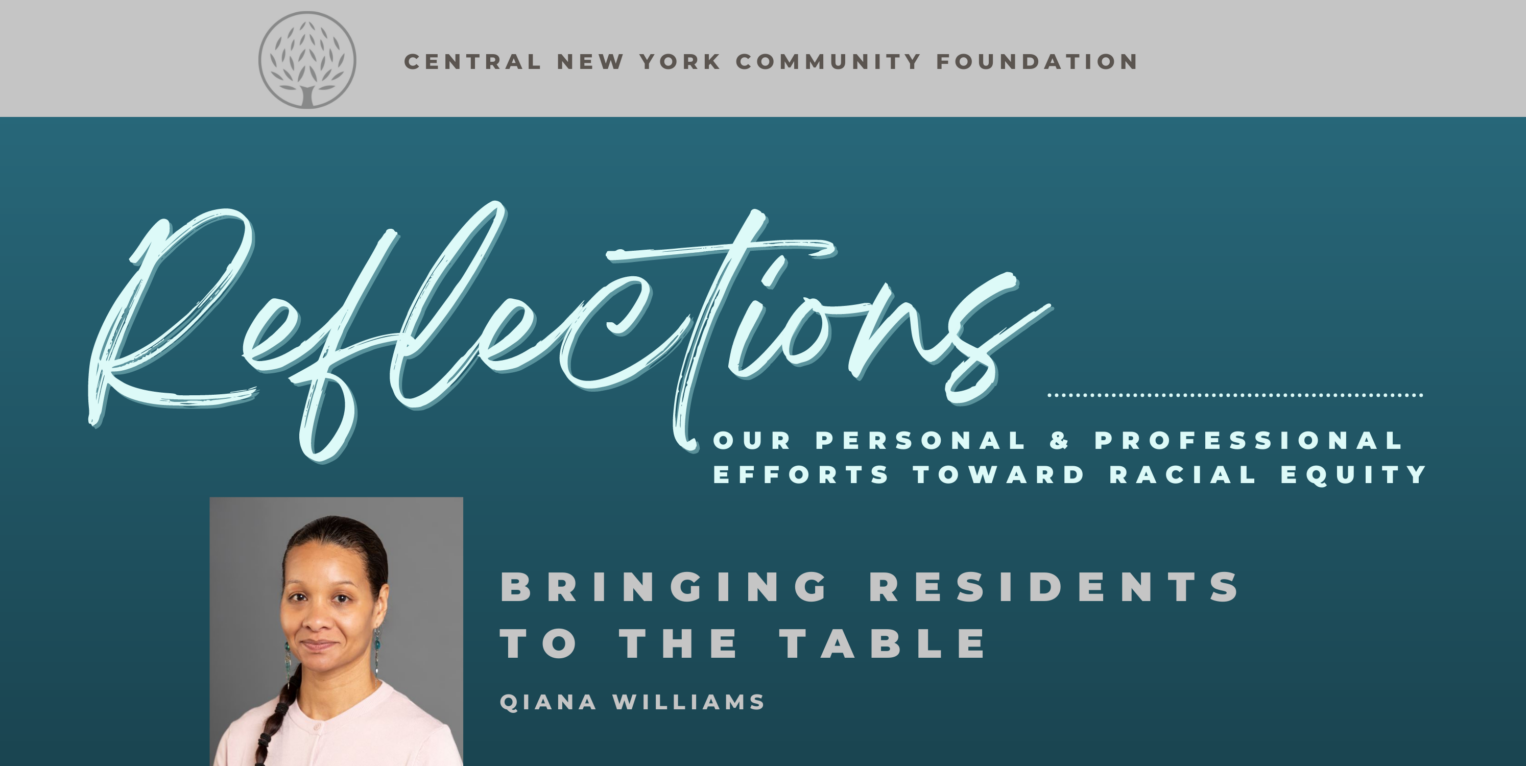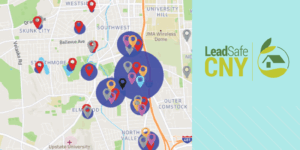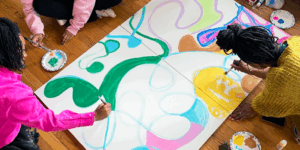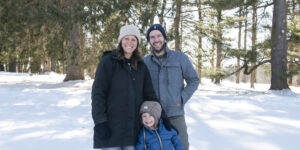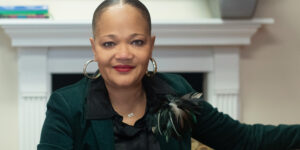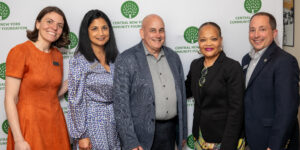Reflections: Our Personal & Professional Efforts Toward Racial Equity is a monthly blog. Each month, we will reflect on what we are doing either personally or professionally to improve diversity, equity and inclusion in our work. View more
Like many, I had no idea that childhood lead poisoning was still a problem in the Central New York community until I first came to work at the Community Foundation. With a desire to learn more this past spring, I sought to dig deeper into the issue by reaching out to the experts to get a better grasp on this crisis.
During one meeting I attended, a facilitator asked attendees to remember a home they frequented or lived in as a child and to recall what we loved or liked about this home and why. After a few minutes of reflection, I eventually thought of my paternal grandmother’s two-family home on the Southside of Syracuse. It wasn’t a fancy house, but all of my aunties and uncles and their children lived there. Grandma had her special church ladies’ room, the one with the nicest furniture that we were forbidden to sit on. What intrigued me about the house was the stained glass windows lining the staircase to the upper level. When the sun shined on them you could see a spectrum of colors. I often thought of fairies and magical places looking through those windows. After my grandmother’s passing, the house was demolished. It was built in the early twentieth century, and likely had lead paint in high-friction areas such as windows and doors that would have deteriorated by now if the house was still standing.
As I recalled this memory it made me think of all the old homes currently in Syracuse, ones that have not been restored to their former glory. The rundown homes, the barely habitable structures, the over-priced home rentals, the places where so many children live, eat, and play each day, unknowing that they live with a silent predator: lead. I thought, what escape do they have and what can our community do to ensure that they have the best possible future, free of lead poisoning? How do we support those closest to the issue? How do we create equity for all of our community members, especially those who have been historically impacted by systemic racism?
Close to 12% of Black children in Onondaga County experience higher than average blood lead levels in contrast to their White counterparts who come in at 6.4%, according to the Onondaga County Health Department. These are children living in homes built before 1978, when lead paint was banned from use. These are children living in homes whose parents more often than not live below the poverty line or who are considered asset limited income constrained employed (ALICE). These are children who have no escape and have no voice.
As part of its long standing commitment to racial equity, the Central New York Community Foundation has worked tirelessly to improve the quality of life for our youth and our neighborhoods through its LeadSafeCNY initiative. This vital work has resulted in critical partnerships with grassroots organizations, nonprofits, Onondaga County and the City of Syracuse to leverage resources and funding that will help to eradicate childhood lead poisoning. To further our racial equity and advocacy work around this issue, we launched our first-ever participatory budgeting project to increase lead testing for children. Participatory budgeting is a powerful civic tool that gives residents most affected by an issue the power to decide how to spend funds to address that community need. Through this process, residents learn about an issue, create ideas for solutions, develop proposals and then vote on the most feasible proposals that will then get funded.
We launched our first participatory budgeting program this fall and began to do outreach by circulating a flier that asked the question, “How would you spend $150,000 dollars?” We brought our fold-up table and swag to every festival, fair and convening we could participate in to bring awareness to the lead crisis and to engage our community around the work we do. We partnered with Layla Ambassadors, Families for Lead Freedom Now, Legal Services of CNY, the Peacemaking Project and the Program for Advanced Research on Resolution and Conflict Center to help facilitate the process. We used data from our Life Needs Assessment network to identify the neighborhoods where residents were most impacted by lead and/or who did not have their children or homes tested for lead. When designing the process, we chose meeting locations that were situated in the neighborhoods our participants lived to minimize travel, and offered free childcare, dinner, and translators if needed.
So far, we have facilitated these meetings for three months, inviting community leaders and experts to share what’s been done to eliminate childhood lead poisoning. At each table, residents are asked to share their thoughts on the issue and their lived-experiences, followed by idea generation collected on chart paper. At the end of the meeting, participants take part in “dotmocracy”, a process where they affix their stickers onto their top 3 choices from all the tables.
Some residents shared experiences of their own children having lead poisoning, while others were shocked by the number of children who have been lead poisoned in Syracuse. One resident exclaimed, “I had no idea that lead poisoning was still a problem.”
Ideas presented so far have included bringing back the Onondaga County lead testing bus, expanding school-based clinics and the passing of ordinances that protect renters.
Participatory budgeting is a fascinating process to observe. It is direct democracy in action – residents discussing, deliberating, deciding how to solve a problem collaboratively. It is one of the strongest tools for equity because it uplifts and amplifies everyone’s voice and ensures that those who have been historically disenfranchised have a seat at the table of decision.
Learn more about participatory budgeting.
